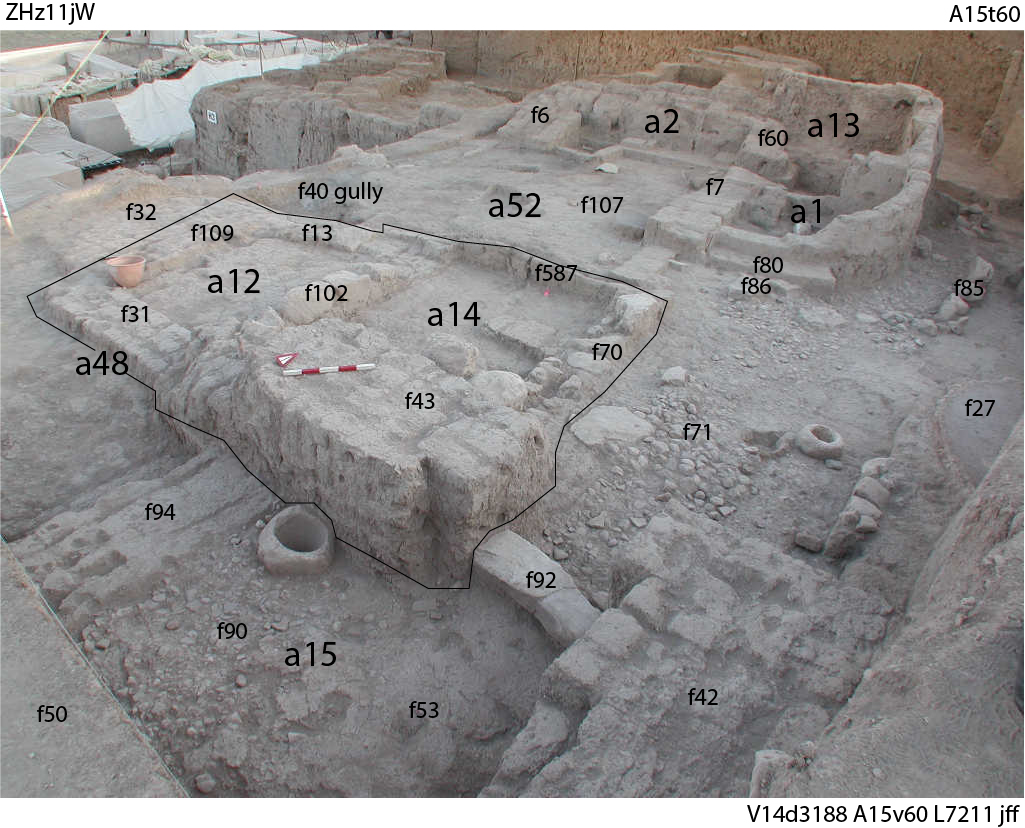Back to top: Phase 6cA15A within Unit A15
Stratigraphy
Back to top: Phase 6cA15A within Unit A15
Structures
|
Stratum 270 includes the consruction of walls, floors, and installations associated with the Khabur settlement on the east and south facing sides of the mound. There were two extant sections in this locus. The first was an industrial area bordered on the north by a shed-like structure open to the south and bordered on the south by a two-room building that may have served as a shop, with one room open on the east side bordering a sherd and pebble street extending to the north into more structures excavated as part of unit A13. |

|
|
|
The second section of the construction was to the south of the industrial area running along the east and south baulks.the main parts were in loci k13, k14, and k15. As this was in an area eroded by two deep gullys, much of the architecture was lost. All that remains is a long, low brick wall in the east baulk, part of a stone platform, and a single room (a35) along the south baulk. This room is remarable because it was built directly atop an Akkadian palace wall, indicating that at least some of the Tupkish strutures were still visible several centuries later. |

|
Back to top: Phase 6cA15A within Unit A15
Early Khabur occupation
|
Stratum 290 comprises the accumlations and other deposits that are below the structures of stratum 270 but are above the deposits of the Isin Larsa and UrIII horizon. These extend throughout loci k11 through k15 as well as k3 to k5. Sherd dates were the main mechanism used to differentiate these features. It is possible that a more distinct transistion exists below the Khabur structures along the east baulk, but they were left in place. Within each locus we have attempted to separate phases using a combination of ceramics dating and elevation. This process is not precise and may result in errors, particulaly when few floors or structures are present. We are heavily relying on the strata assignments made at the time of excavation. |
Back to top: Phase 6cA15A within Unit A15
Typology
Ceramics and items from these features are fully analyzed and cataloged. The majority of these features were in or influenced by gullys. There were numerous sherds in the accumulations so individual q-lots may have concentrations of Mittani or Khabur sherds mixed with the originally deposited Isin Larsa or UrIII material.
Back to top: Phase 6cA15A within Unit A15